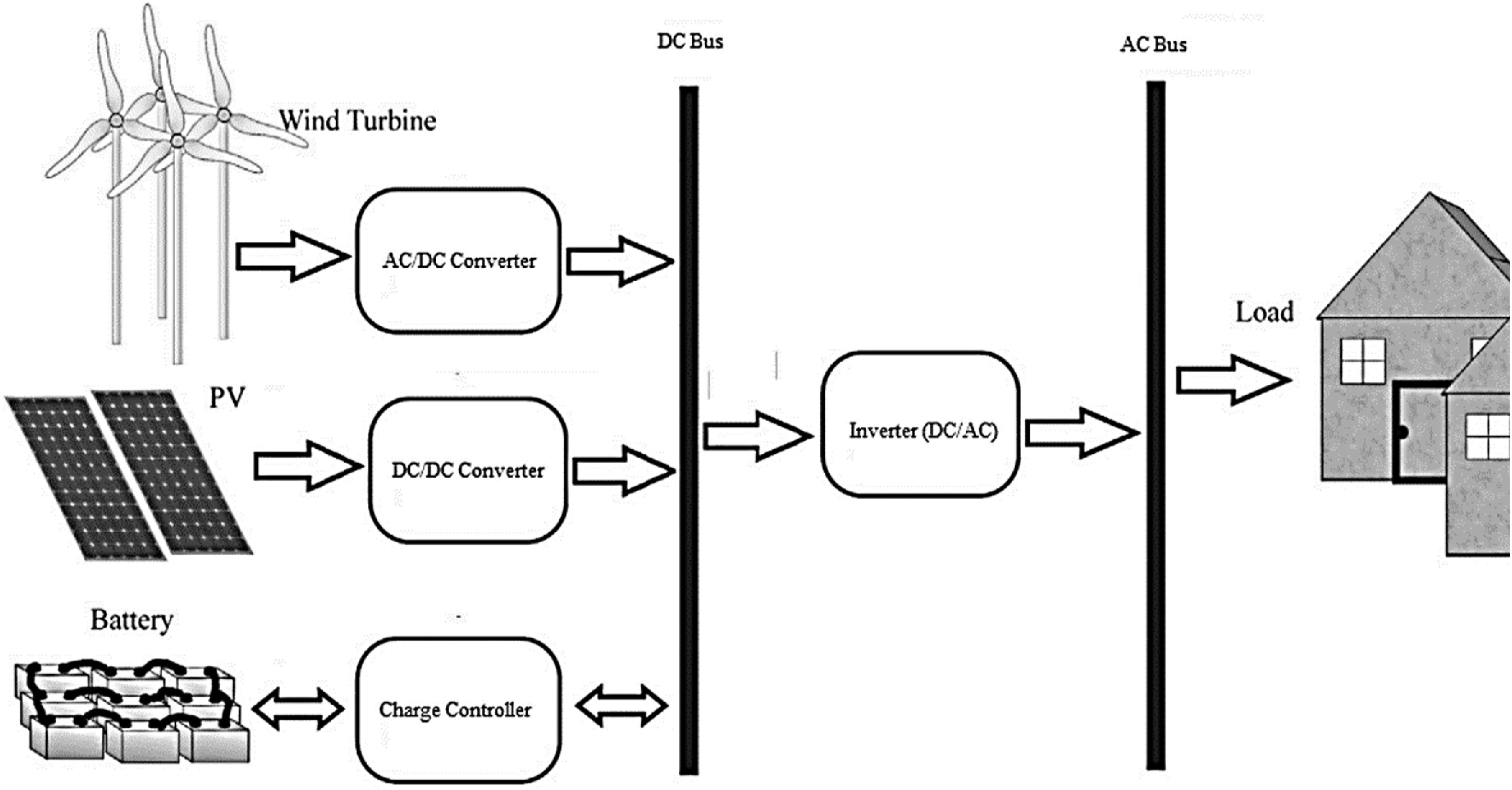A review of hybrid energy technologies tenets, controls and combinational strategies
Author: Shaharin Anwar Sulaiman - December 2021
Abstract
The biggest problem that has been faced globally is the extinction of natural resources for production of energy. Industries as well as consumers should devise some ways to generate energy by utilizing limited resources and hence making the system cost effective. The resources of renewable energy and their reserves are sources of survival in modern era. The ever-rising demand of electricity and the trend that has been shifted to electric vehicles require some devices that can be used for energy production, distribution and storage. The focus of this review is to deduce some efficient techniques utilizing the renewable energy resources that can be cost effective, environment friendly and most economical energy producers. This review also discusses the development of hybridized topologies and tenets, control and energy administrative policies, power electronics interface architectures, different methodologies applied in different hybrid energy systems, designing, types and application arenas. The objective was to uncover the evolution of hybrid energy systems by presenting the research that has already been conducted in this domain and to discuss diverse technologies and control mechanisms they have used in their research.
Methodology
This software has its most effectiveness in 20th century. It helps to determine and optimize designing of HES. The necessity is to make the system cost optimal. To optimize the cost, electrical grid should be used instead of storage system (Suresh et al., 2020). For renewable energy plant expenditure's calculations different system are selected. These systems are used for best sizing to minimize the cost of the system to smaller unit and it is stimulated by HOMER software. Different type of systems such PV, PV-wind, PV wind fuel cell should be evaluated to reduce the expenditures. If PV only system is considered, then it is used to provide power during daytime while grid will provide power at night. So the whole system is stimulated on HOMER software including running and expenditures. Another system is wind and grid connected hybrid system. Apart from providing 17% energy from gird, wind and PV energy share 37 and 49% of overall energy, respectively. This PV wind system consists of wind, PV system, fuel cells, hydrogen tanks and electrolyser. Electrolyser produces hydrogen gas and it is stored in hydrogen tank. Hydrogen is supplier of fuel cell to produce electricity. All the simulations are given in the HOMER simulations. It is concluded that the standalone PV system has least cost of energy because of high irradiation of sunlight. Inverter plays major role in affecting the cost of system. Instead of using inverter to reduce the cost, DC supply should be used in remote areas to meet the demand.
Impact & Benefits
Increased Efficiency: Hybrid energy systems often leverage the strengths of different energy sources, such as solar, wind, and battery storage, to maximize overall efficiency. Reviewing these technologies helps identify optimal configurations and controls to achieve higher energy conversion efficiencies.
Enhanced Reliability: By combining multiple energy sources, hybrid systems can provide more reliable power supply, especially in areas prone to intermittency or variability in renewable energy generation. Understanding the tenets and controls of these systems helps design robust and resilient energy infrastructure.
Cost Savings: Optimizing the combination of renewable and conventional energy sources can lead to cost savings over time. Reviewing hybrid energy technologies allows for the identification of cost-effective strategies, such as demand-side management and energy storage integration, to reduce operational expenses.
Environmental Benefits: Hybrid energy systems typically have lower carbon emissions compared to conventional energy systems. Reviewing these technologies helps quantify their environmental benefits, such as reduced greenhouse gas emissions and mitigated air pollution, contributing to overall sustainability goals.
Market Potential
Energy Industry: Within the energy industry, there is a growing demand for solutions that enhance efficiency, reliability, and sustainability. A review of hybrid energy technologies provides valuable insights for energy companies, utilities, and developers looking to optimize their energy infrastructure. This includes identifying cost-effective strategies, improving grid integration, and maximizing the utilization of renewable resources.
Renewable Energy Sector: The renewable energy sector stands to benefit significantly from advancements in hybrid energy technologies. Integrating renewable sources like solar and wind with storage systems and traditional energy sources can help overcome intermittency challenges and improve overall system reliability. Reviews of combinational strategies offer valuable guidance for renewable energy project developers and investors seeking to maximize returns and mitigate risks.
Smart Grid and Energy Management: Smart grid technologies and advanced energy management systems play a crucial role in optimizing the performance of hybrid energy systems. Reviews of controls and operational strategies help drive innovation in smart grid technology, demand response programs, and energy storage management solutions. This market segment includes software developers, hardware manufacturers, and service providers offering grid optimization solutions.
Industrial and Commercial Sectors: Industries and commercial enterprises are increasingly investing in hybrid energy systems to reduce operating costs, enhance energy resilience, and meet sustainability targets. A review of hybrid energy technologies helps these sectors identify customized solutions tailored to their specific energy needs and operational requirements. This market segment includes manufacturing facilities, data centers, commercial buildings, and agricultural operations.



